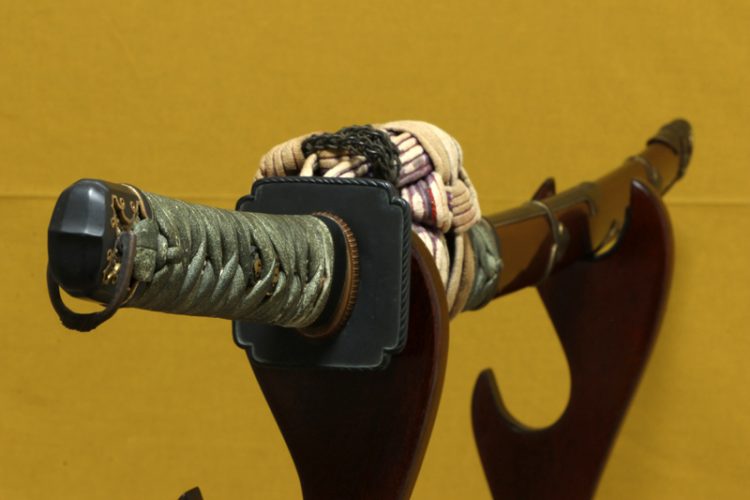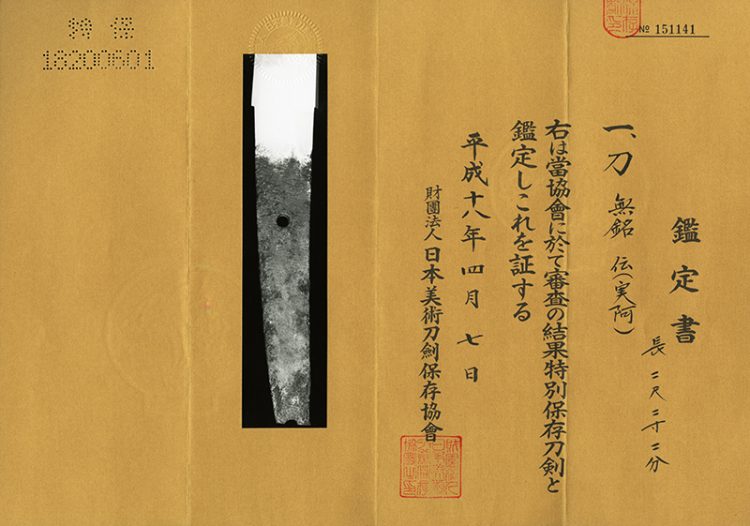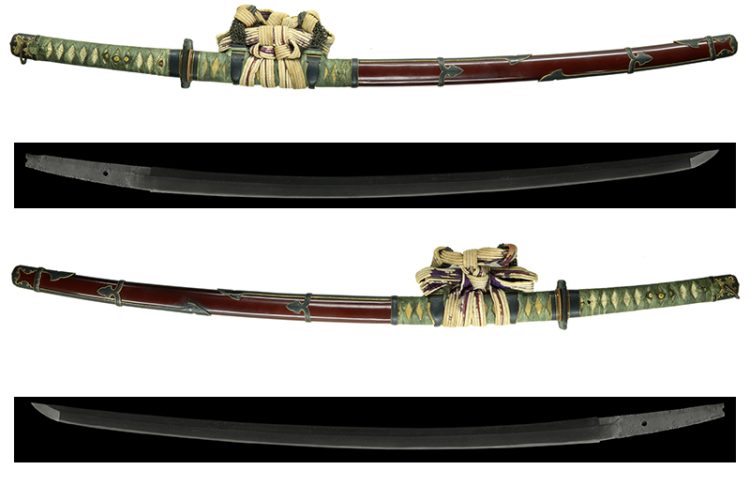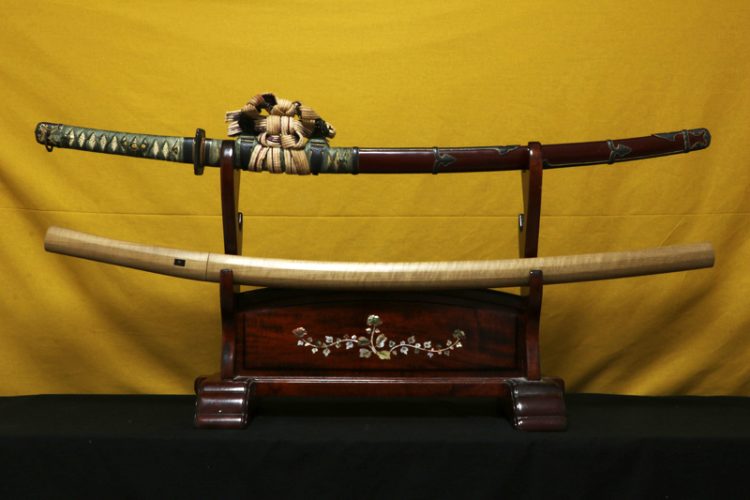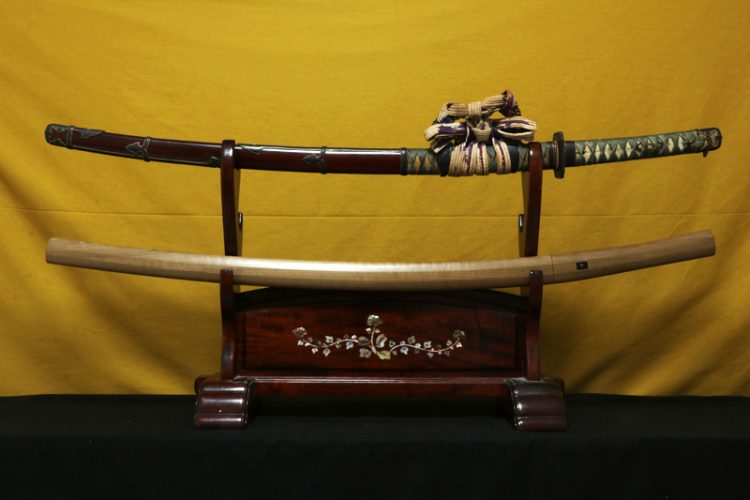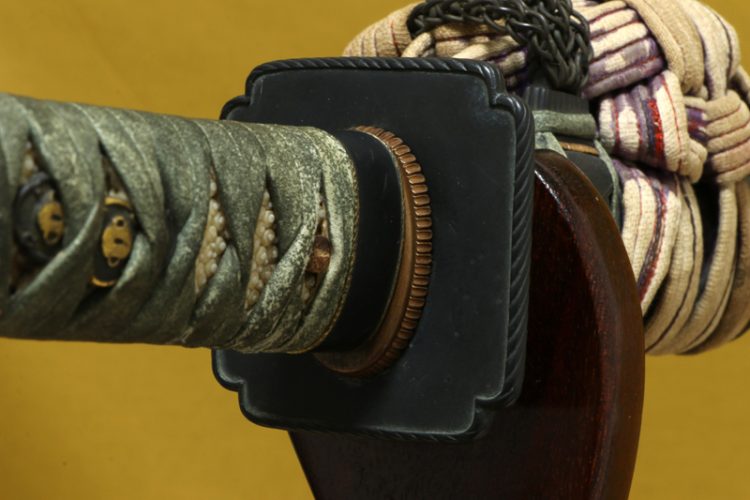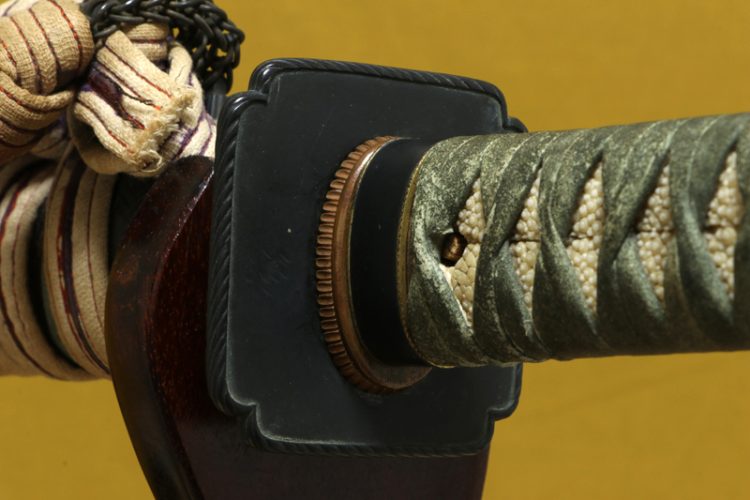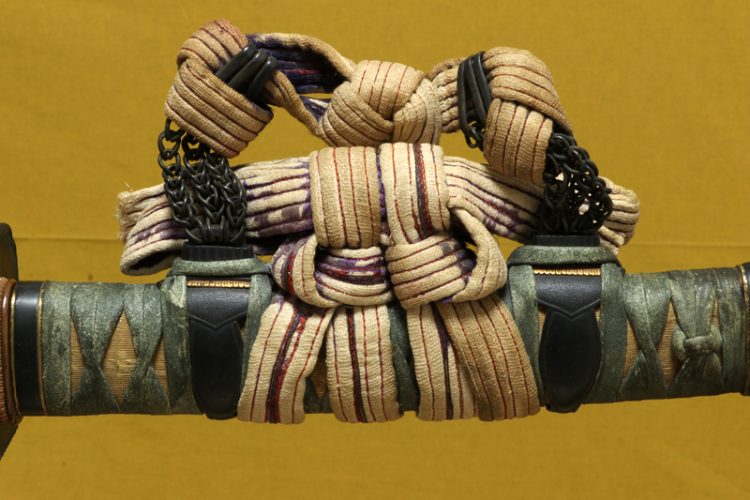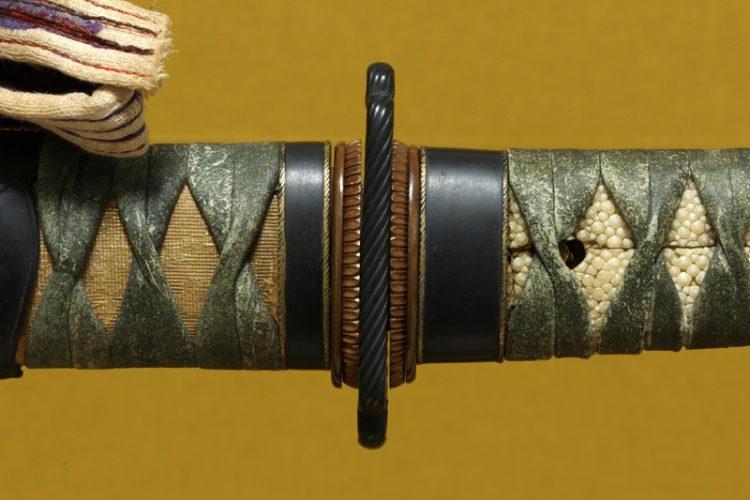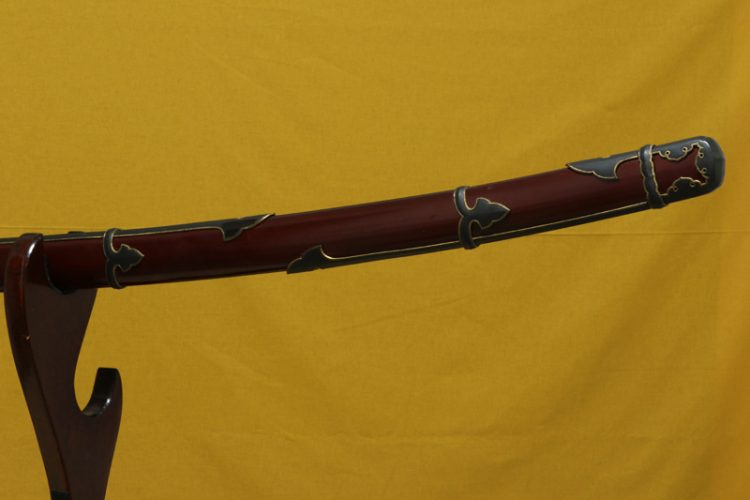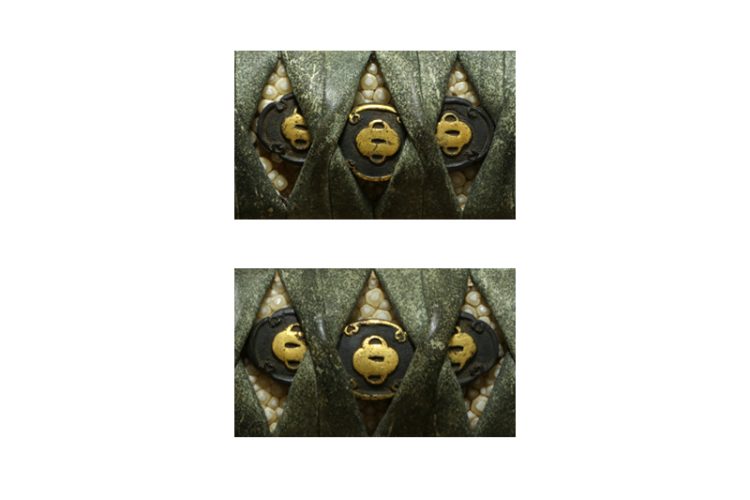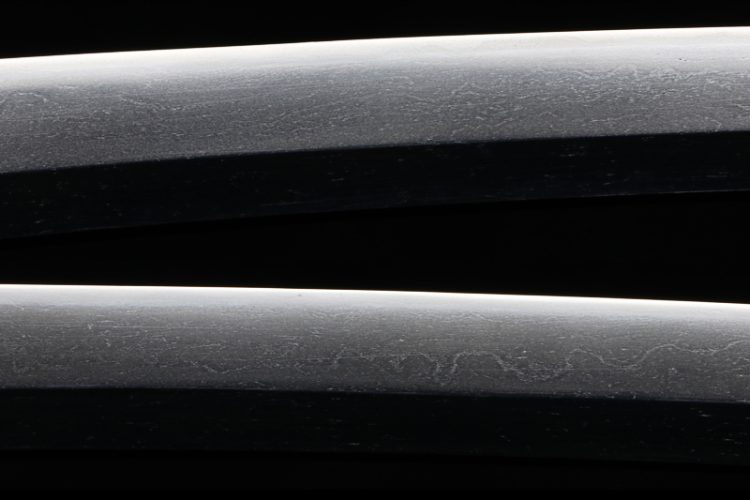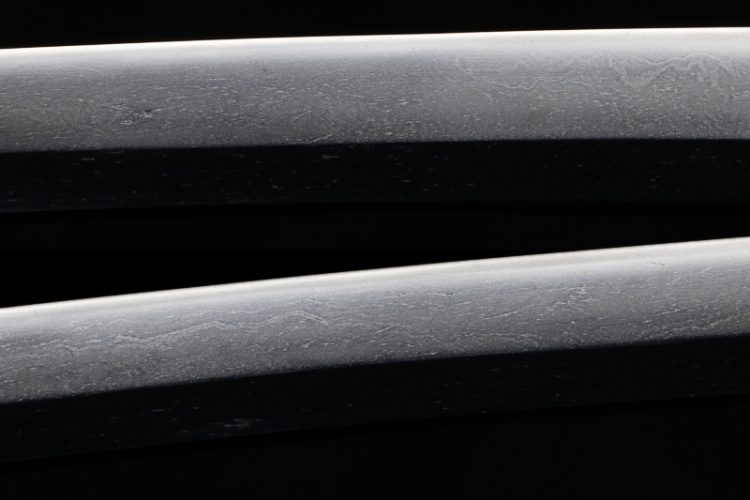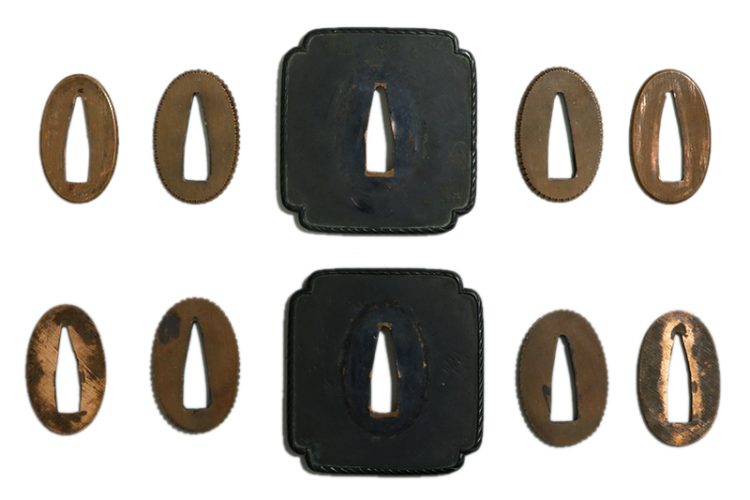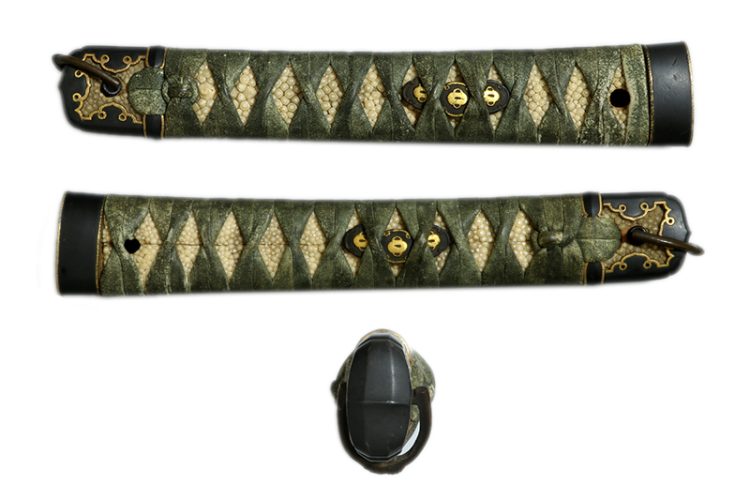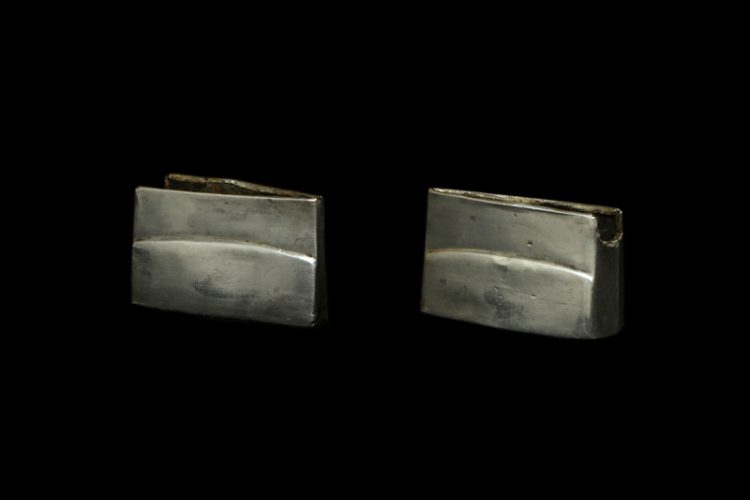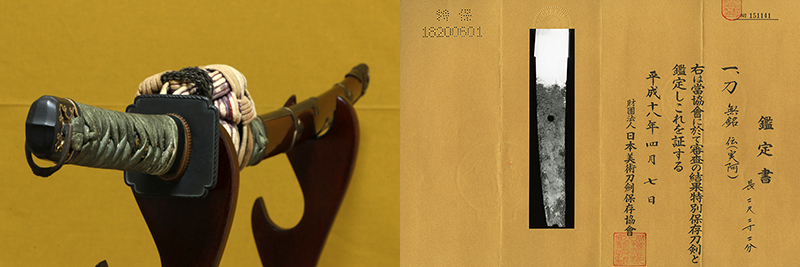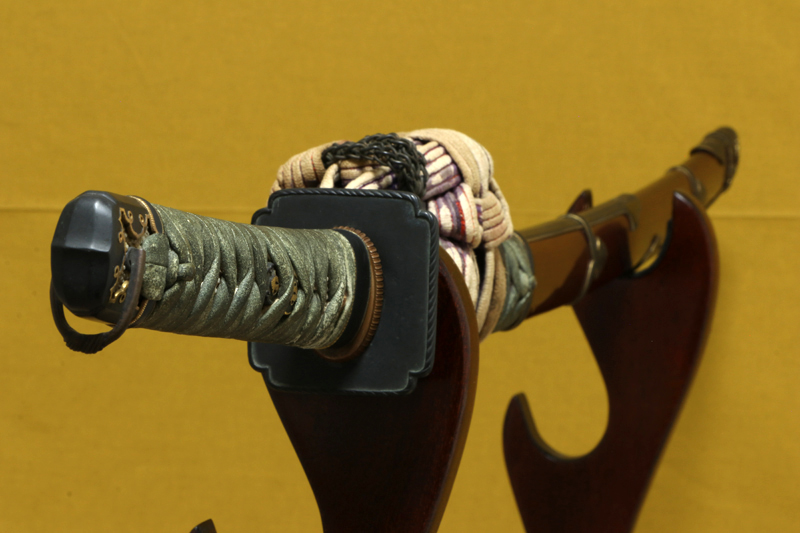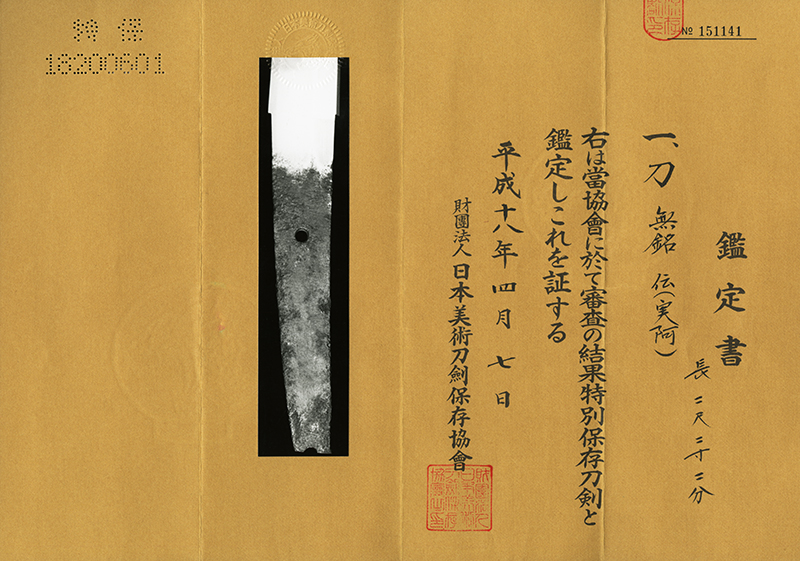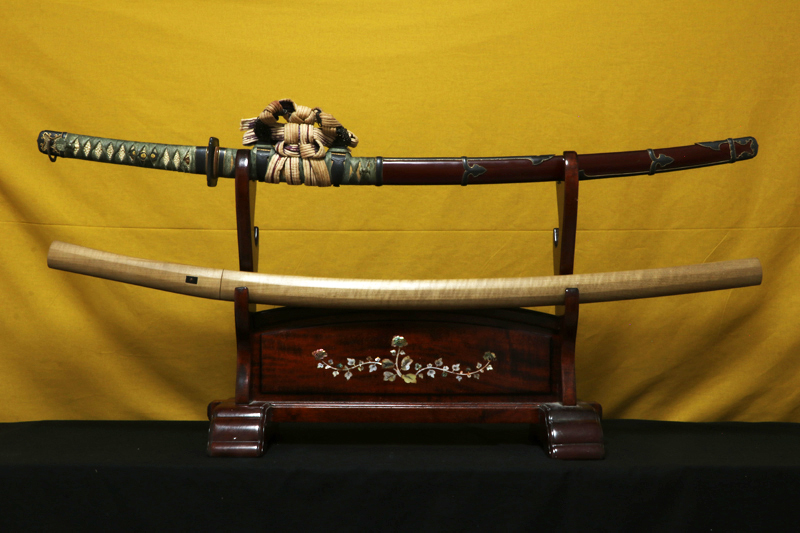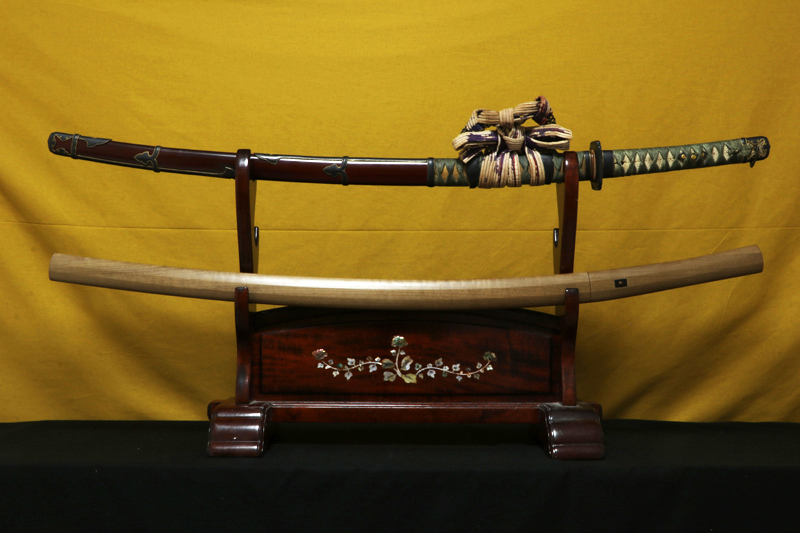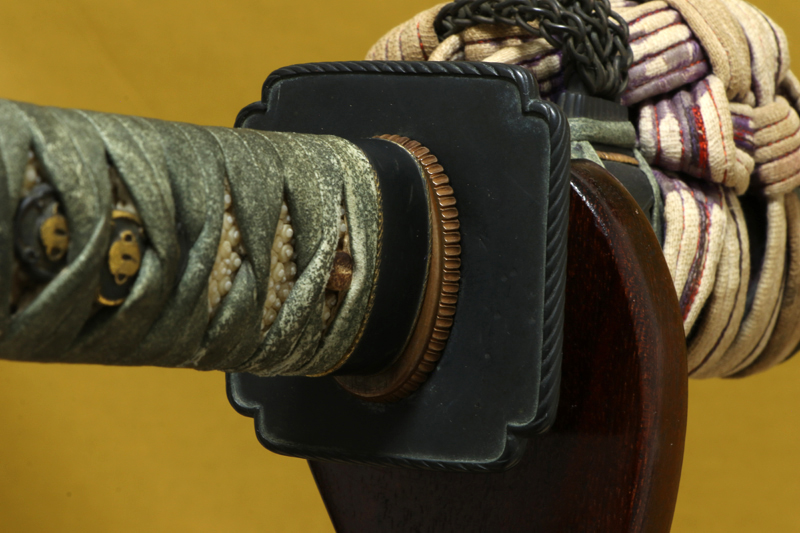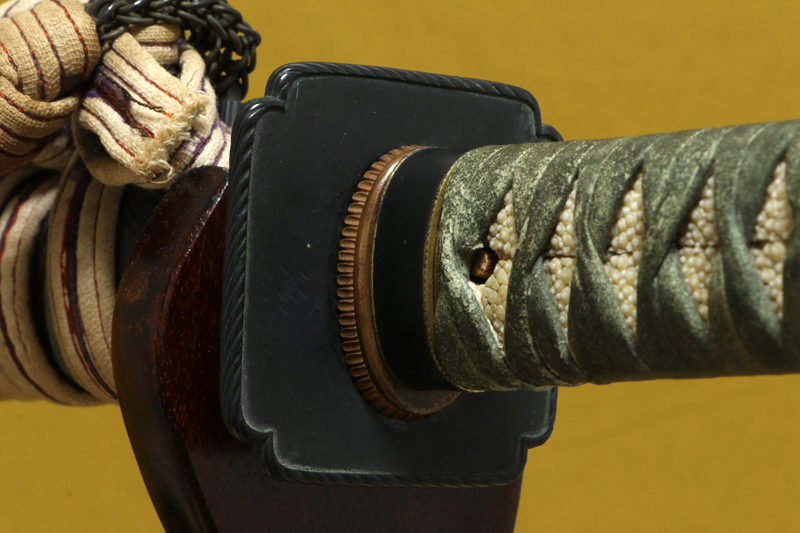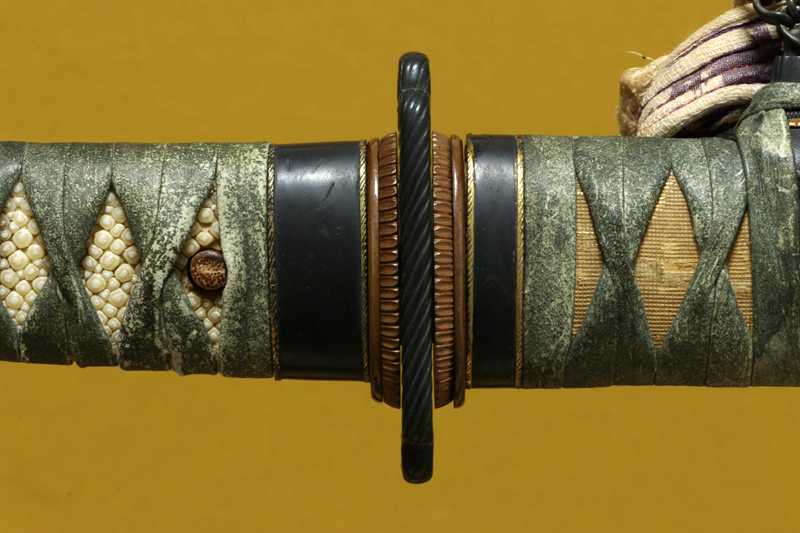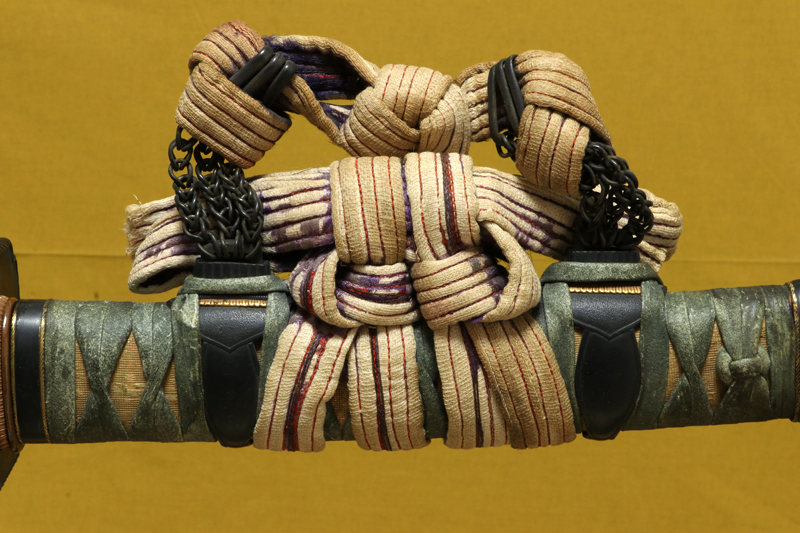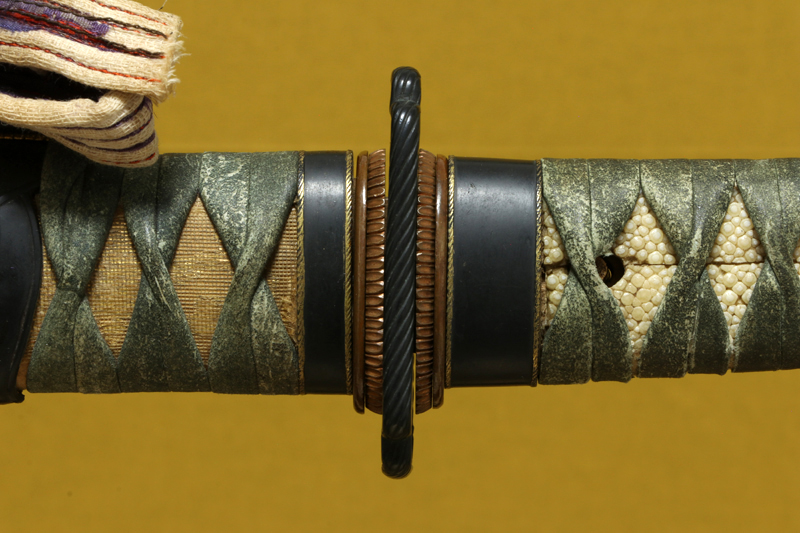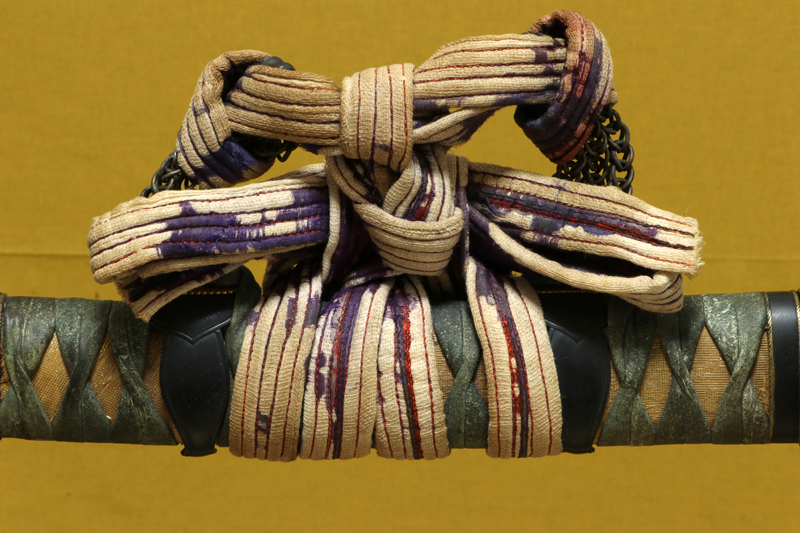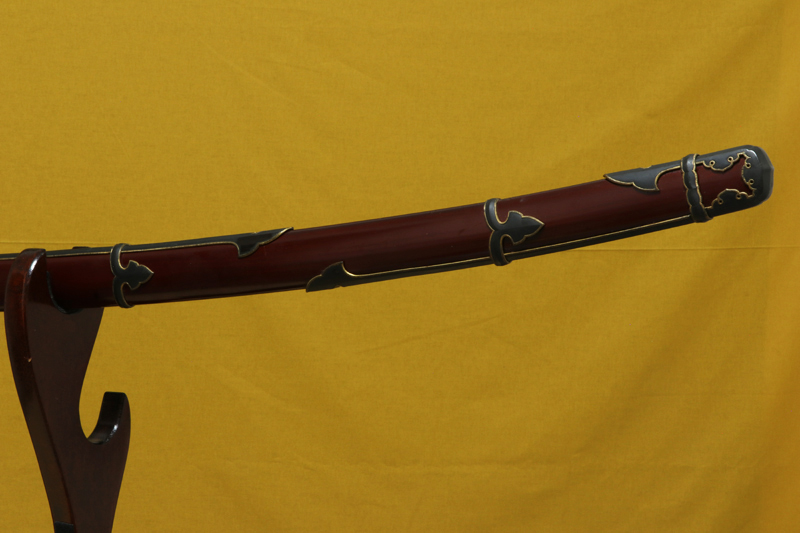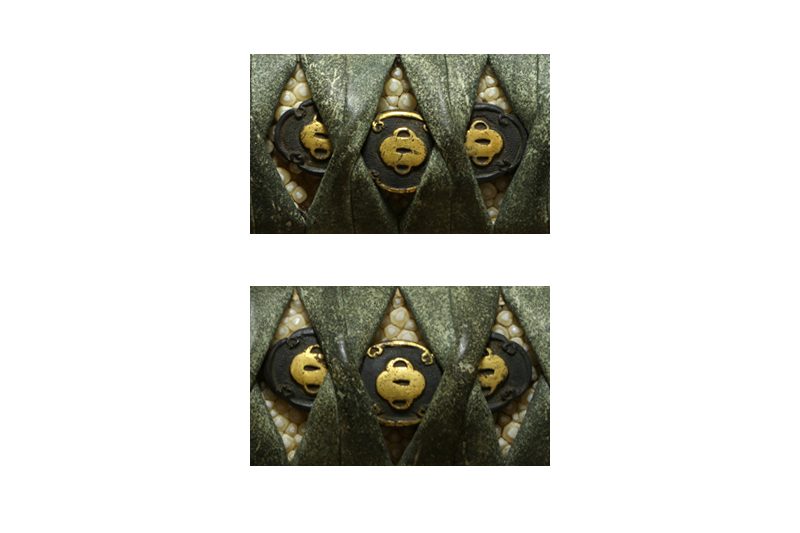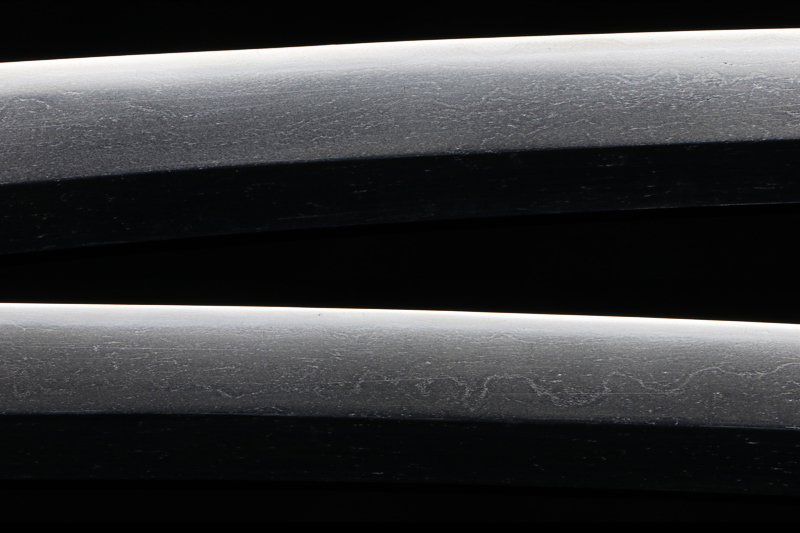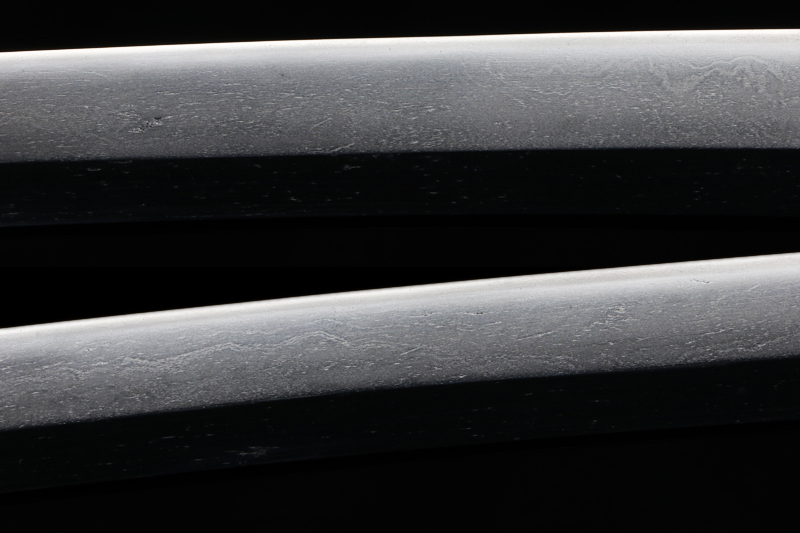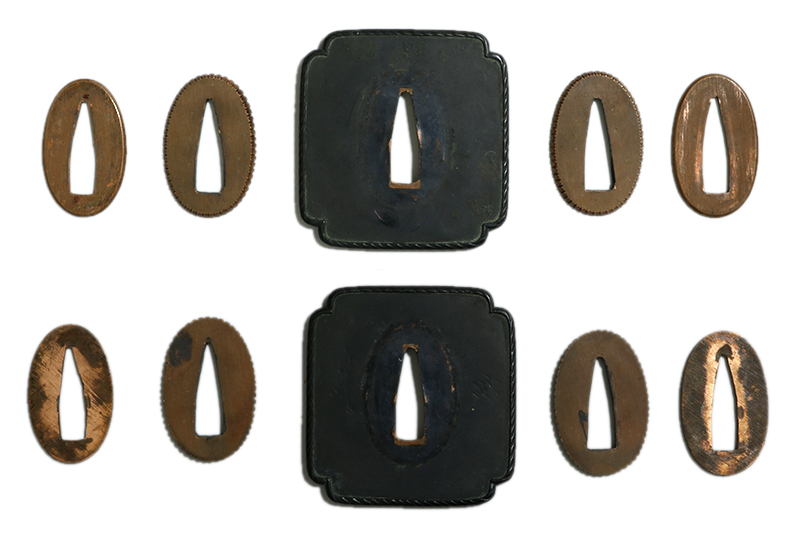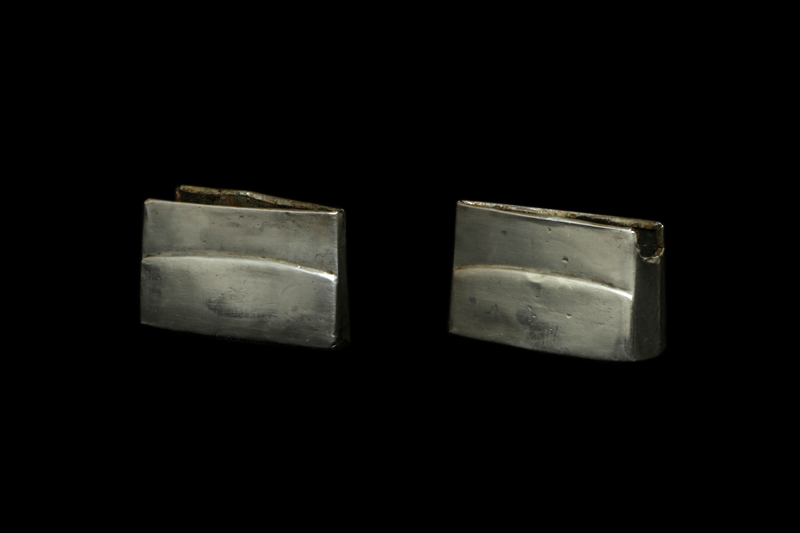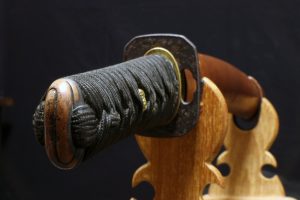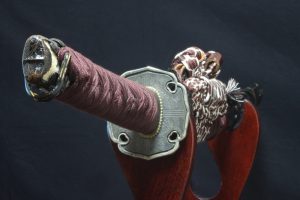説明
「刀姿 sword figure」
鎬造り庵棟、身幅重尋常、やや腰反りで小鋒。茎は大磨り揚げで、筋違い鑢がかかり、茎尻は目釘穴で切られる。
「地鉄 jigane」
地鉄は板目肌に杢・大板目が交じり、総じて流れ所々柾がかり、大模様に肌立、地沸付き、地斑状の肌を交え、かな色に黒味が有り、白気映り立つ。
「刃紋 hamon」
細直刃調に、小互の目・小のたれ・小乱れこころ交じり、足・葉入り、小沸つき、ほつれ・打のけ・砂流しかかり、金筋が入る。
釯子は直に入り、履き掛け、先沸崩れ風と成る。
「特徴 detailed」
実阿(じつあ)は、鎌倉時代後期の嘉暦頃(1326年〜1329年)に活躍した筑前国(現在の福岡県)の刀工であり、名高い刀匠の家系に生まれました。父の**西蓮(さいれん)も刀工として知られており、実阿はその技を受け継ぎつつ、自身の独自の作風を確立しました。さらに、実阿の息子である大左(おおさ)**は「左文字(さもんじ)」として有名であり、彼もまた父の技を発展させ、名工として後世に知られています。
本作は鎌倉時代後期の太刀を、室町時代に磨り揚げて、打刀としたものです。その後、どこかの大名家に伝わり太刀拵を付けた物だと思われます。
Jitsua was a swordsmith from the Chikuzen Province (modern-day Fukuoka Prefecture) who flourished during the late Kamakura period, specifically around the Kareki era (1326–1329). Born into a renowned family of swordmakers, Jitsua inherited the skills of his father, Sairen, who was also a distinguished swordsmith. Jitsua developed his own distinctive style while preserving the traditional techniques passed down from his father.
Moreover, Jitsua’s son, Ōsa, is famously known as Samonji. Ōsa further advanced the craftsmanship he inherited from his father and became a renowned swordsmith in his own right, leaving a lasting legacy in Japanese sword-making.
This piece is believed to be a tachi from the late Kamakura period that was polished and converted into a katana during the Muromachi period. It is thought to have been passed down to a daimyo family at some point and had a katana mount added to it.
「拵 Koshirae」
拵は江戸時代中期頃の兵庫鎖太刀拵です。つなぎと白鞘が付属。コンディションは良いです。
The koshirae is a HyogoKusaritachi-Koshirae from the mid-Edo period. It comes with a tsunagi and a shirasaya. The condition is good.
ハバキ(habaki) :素銅地銀着二重の磨き地。
太刀金具(fittings of Tachi) :赤銅磨き地太刀金具。
鍔(tuba):赤銅角木瓜形太刀鍔。
目貫(menuki) :赤銅地家紋の図。
柄(tsuka) :鮫は親粒が付き巻鮫。柄糸は鹿燻革の
鞘(saya) :うるみ色。
「刀剣の状態 condition of blade」
研:良好です。
傷:欠点に成るような傷は有りません。
